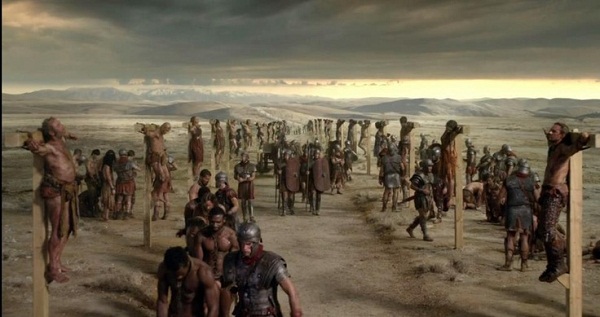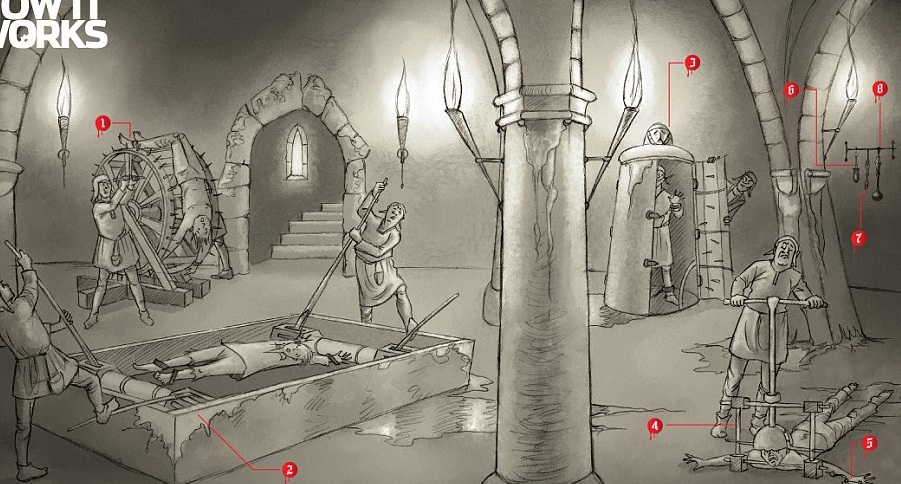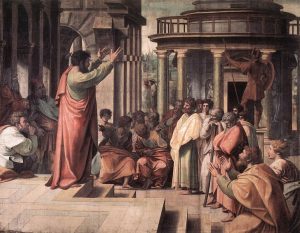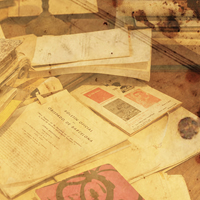
The Romans issued the most brutal and agonizing death penalty the world has ever known—crucifixion. Jesus endured this to pay the price for our sins.
“Dogs have surrounded me; a band of evil men has encircled me, they have pierced my hands and my feet.” (Psalm 22:16)
This is the central verse of an amazing prophecy that details the suffering and death of Jesus Christ 1,000 years before his birth. In fact, we see details of a form of capital punishment known as “crucifixion” that didn’t even exist at the time this prophecy was written. It was not until the 1st century A.D. that the Roman Empire instituted this horrific form of capital punishment. 
Crucifixion typically began with a scourging or flogging of the victim’s back. The Romans used a whip called a “flagrum”, which consisted of small pieces of bone and metal attached to many leather strands. The number of blows given to Jesus is not recorded. However, the number of blows traditionally used in Jewish law was 39—one less than the 40 called for in the Torah—to prevent an accidental counting error. During the scourging, the skin was ripped from the back, exposing a bloody mass of tissue and bone. Extreme blood loss occurred, often causing unconsciousness, if not death. In addition to the flogging, Jesus faced a severe beating and torment by the Roman soldiers, including having his beard pulled out and a crown of thorns pressed into His scalp.
When the soldiers were satisfied with the flogging, the victim was often forced to carry his own crossbar, or “patibulum”, to the execution site. The patibulum could easily weigh 100 pounds. In the case of Jesus, the record shows that he may have carried His patibulum the distance of over two football fields. Once the victim arrived at the execution site, the patibulum was laid out on the ground and the victim was forced to lie on it. Spikes that were approximately 7” long and ⅜” in diameter were driven into the wrists. The spikes would hit the area of the median nerve, sending shocks of pain up the arms to the shoulders and neck. Already standing at the crucifixion site would be the 7’ post, called a “stipes”. In the center of the stipes was a crude wooden “seat” that offered minimal support for the victim. The patibulum was then lifted on to the stipes, and the victim’s body was awkwardly turned on the seat so the feet could be nailed to the stipes. At this point, there was a tremendous strain on the wrists, arms, and shoulders, resulting in the dislocation of the shoulder and elbow joints.
 The position of the nailed body held the victim’s rib cage in a fixed position, which made it extremely difficult to exhale, and impossible to take a full breath. Having suffered from the scourging, the beatings, and the walk with the patibulum, Jesus was described as extremely weak and dehydrated. He was probably losing a significant amount of blood. As time passed, the loss of blood and lack of oxygen would cause severe cramps, spasmodic contractions, and likely unconsciousness.
The position of the nailed body held the victim’s rib cage in a fixed position, which made it extremely difficult to exhale, and impossible to take a full breath. Having suffered from the scourging, the beatings, and the walk with the patibulum, Jesus was described as extremely weak and dehydrated. He was probably losing a significant amount of blood. As time passed, the loss of blood and lack of oxygen would cause severe cramps, spasmodic contractions, and likely unconsciousness.
Ultimately, the mechanism of death in crucifixion was suffocation. To breathe, the victim was forced to push up on his feet to allow for inflation of the lungs. As the body weakened and pain in the feet and legs became unbearable, the victim was forced to trade breathing for pain and exhaustion. Eventually, the victim would succumb, becoming utterly exhausted or lapsing into unconsciousness so that he could no longer lift his body off the stipes to inflate his lungs. Due to the shallow breathing, the victim’s lungs would begin to collapse, causing hypoxia. The loss of blood from the scourging caused an increased strain on the heart which would beat faster to compensate. Fluid would build up in the lungs. Eventually, the heart would fail.
There are several theories about the exact cause of Jesus’ death. One theory is that there was a filling of the pericardium (the sac in which the heart resides) with fluid, which put a fatal strain on the ability of His heart to pump blood. Another theory states that Jesus died of cardiac rupture. Regardless of the actual medical cause, the historical record is very clear—Jesus did not succumb to the physical suffering of the cross until it was his time.
The Apostle John, Jesus’ most loved disciple and an eye witness of his final moment writes this:
When Jesus had received the sour wine, he said, “It is finished.” Then bowing his head, he gave up his spirit.
“It is finished!” The moment before his death, Jesus declared that the payment for our sin was paid in full. We no longer need to fear that we must suffer for the guilt of our sin. He declared that everything that needed to be done so that God could forgive us was accomplished. When the Roman soldier came to to break his legs to put him out of his agony like the two thieves who died with him, there was no need. Jesus had already given up his spirit to death—on his terms. 
The crucifixion should have been the ultimate example of the cost of our sin. Instead, it became the ultimate example of God’s love for us.
Check out Psalm 22 for yourself and ask whether or not it is a graphic picture of Jesus’ crucifixion. Then turn to Psalm 34:20 and compare it with John 19:36. There was a reason why the soldier didn’t break any of Jesus’ bones.
How could all this have been prophesied a thousand years before Jesus died? Why did Jesus willingly sacrifice himself like this and how did his death unite God’s love and His justice? What do you believe about the power and meaning of Christ’s death on the cross?
Want More?
https://www.dontbeleftbehind.org
Sources: Randall Niles, www.AllAboutGOD.com, www.GotQuestions.org, and www.AllAboutTheJourney.org.










